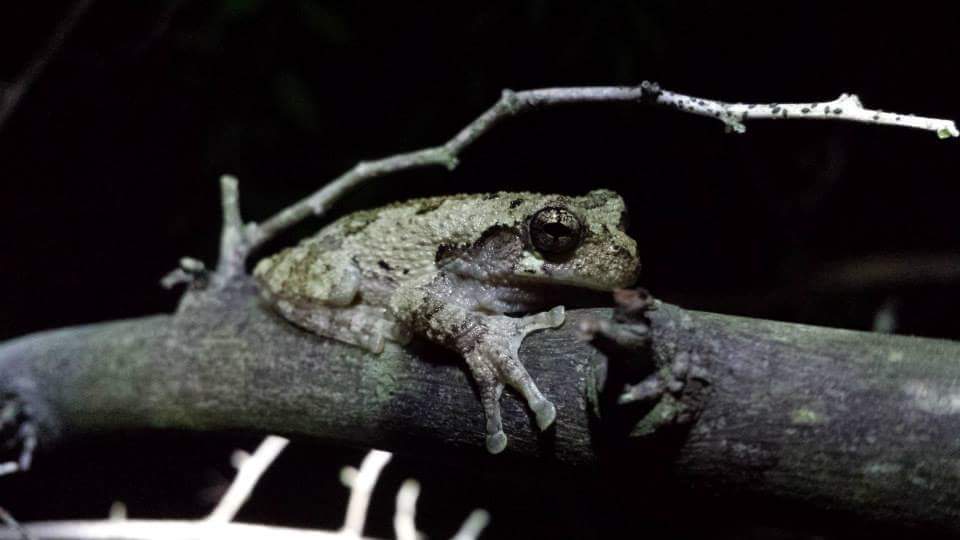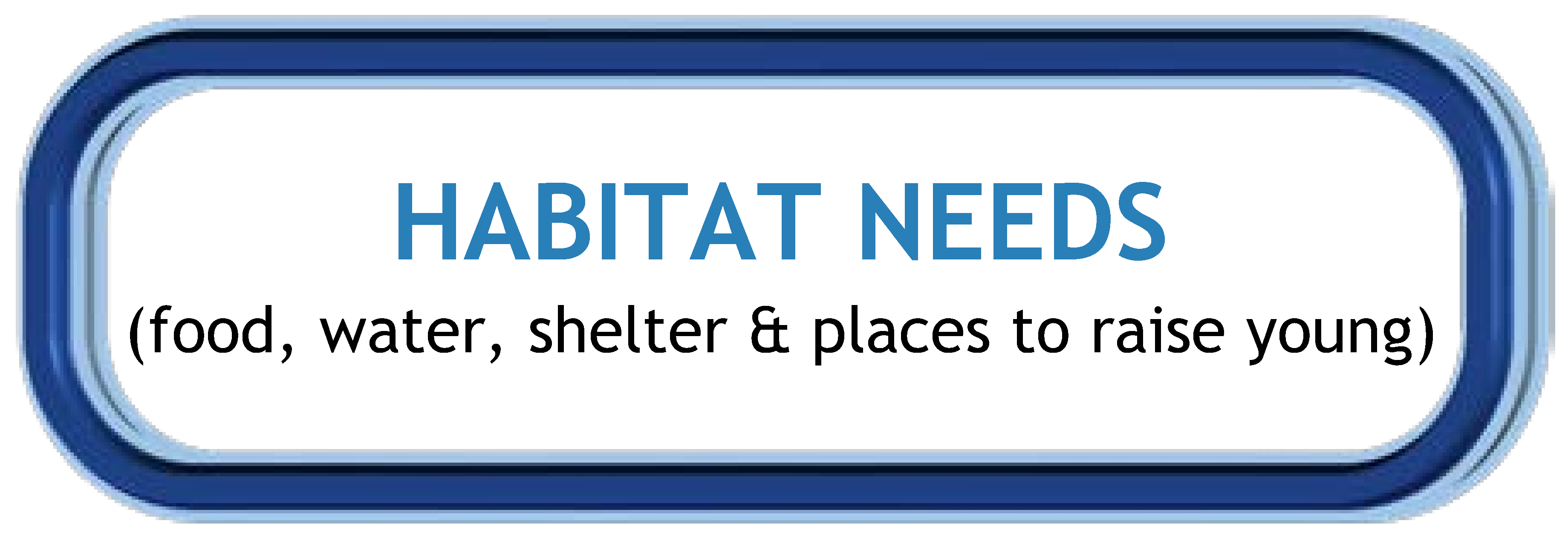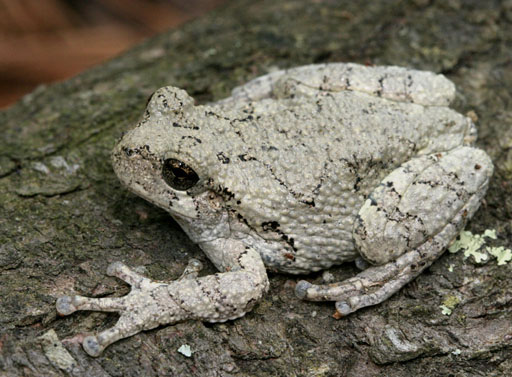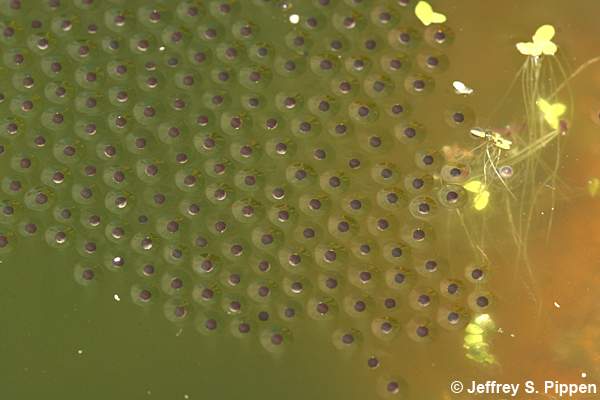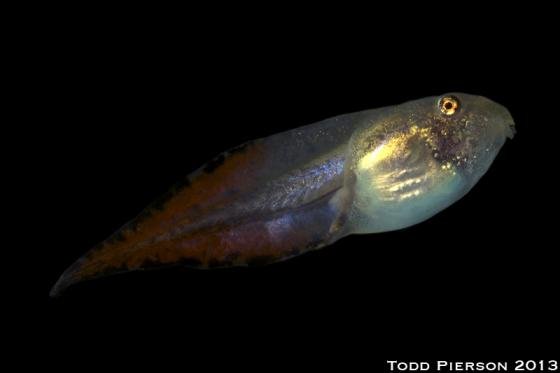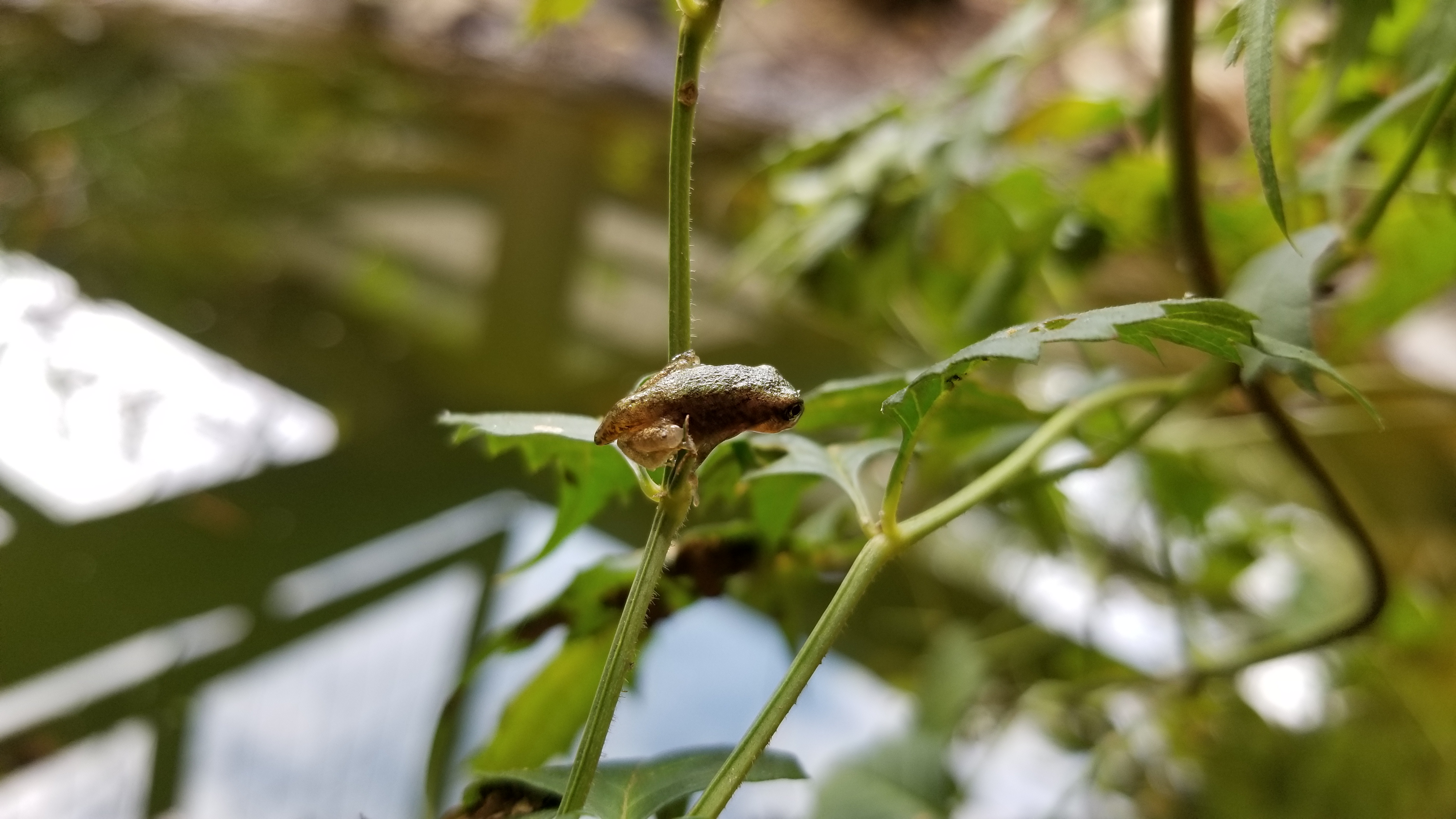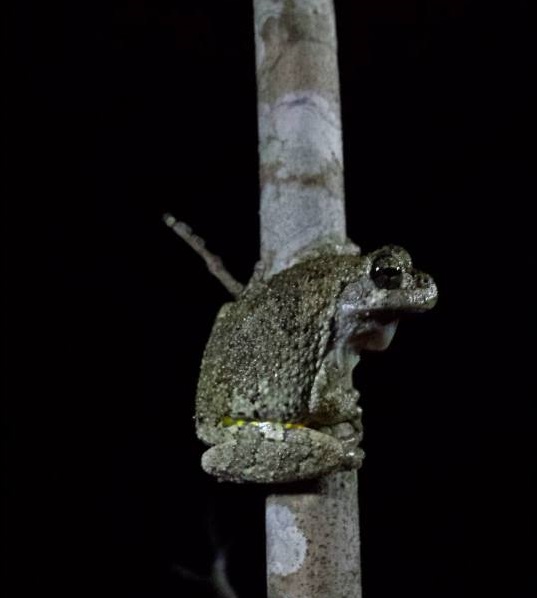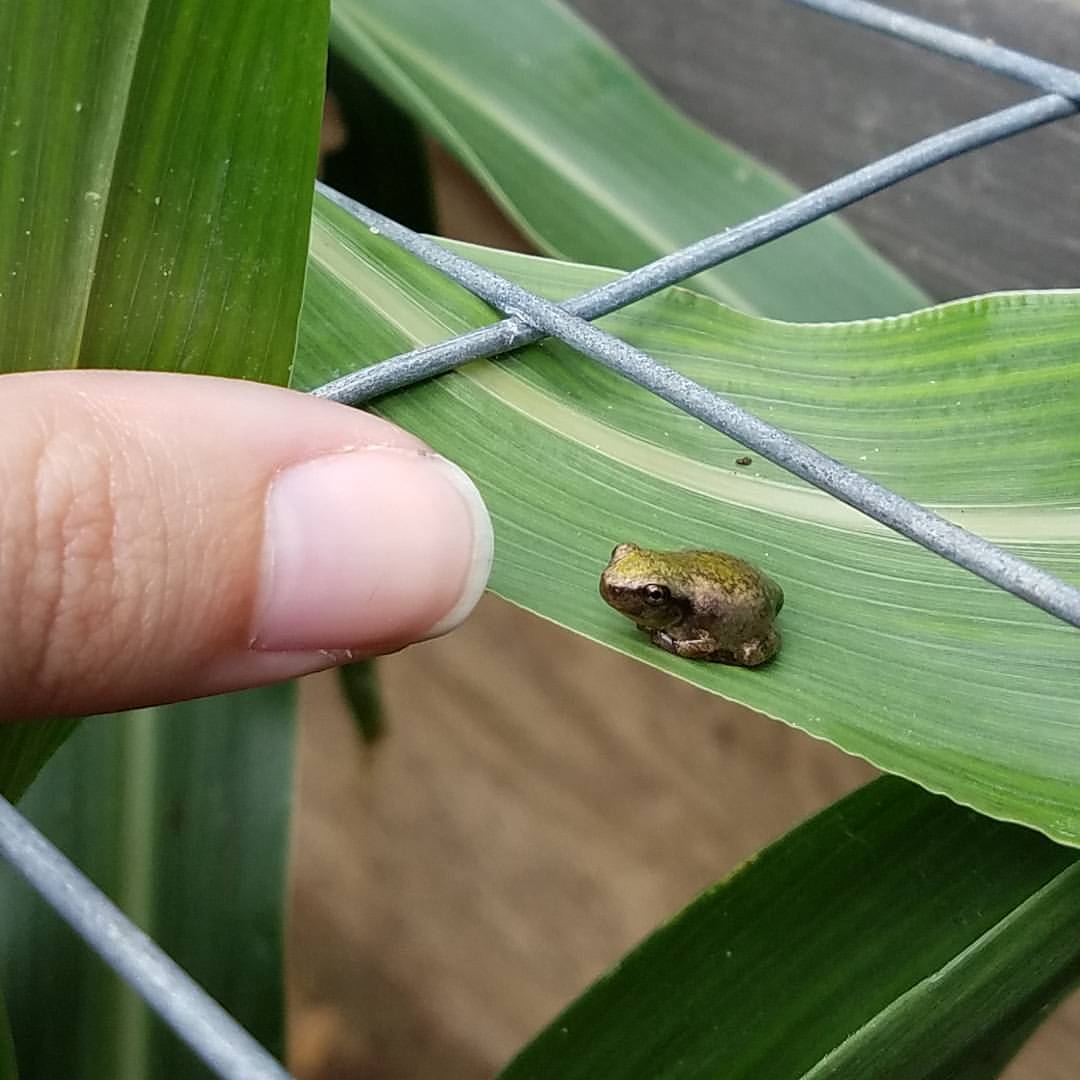Wonders of Wildlife: Cope's Gray Tree Frog
Cope's Gray Tree Frog
Other Common Names: Gray tree frog
Scientific Name: Hyla chrysoscelis
Found in Alabama: Common statewide
Diet: Herbivore (eats plants) as tadpoles
Carnivore (eats animals) as adults |
Cope's Gray Tree Frog in Habitat
Tyler Burgener
Click image to enlarge it
|
Learn more about...
| CLASSIFICATION |
|
What type of animal am I?
- I am a vertebrate (an animal with a spine or backbone).
- I am cold-blooded, so I cannot control my body temperature.
- I do not have scales, feathers, or fur, so I have smooth skin.
- When I am a larva (tadpole), I breathe using gills, and when I am an adult frog, I breathe using lungs.
- I have 4 legs.
|
Scientists use basic traits to group animals into different taxonomic classes.
For a taxonomic classification chart comparing key traits of common backyard wildlife,
CLICK HERE! |
|
| The Cope's Gray Tree Frog is an AMPHIBIAN! |
| IDENTIFICATION TIPS |
Cope's Gray Tree Frog
Wikimedia - Patrick Coin
Click image to enlarge it
|
ADULT COPE'S GRAY TREE FROG |
- Range from 1.25 inches to 2.5 inches long
|
- Light green, light gray, or even brownish with darker spots on the backside
|
- Characteristic light spot under eye
|
- Skin is relatively bumpy compared to other frogs
|
- Inner thighs appear orange-yellow or brown and have yellowish spots
|
| |
|
|
|
EGGS
|
TADPOLES (Larvae)
|
FROGLETS
|
Soft-shelled eggs arranged in packets
|
Usually 1 to 1.5 inches long
Light green or yellow |
Range from size of tadpole
to size of adult (1.25-2.5in)
|
Cope's Gray Tree Frog Eggs
Jeff Pippen
Click image to enlarge it |
Cope's Gray Tree Frog Tadpole
Todd W. Pierson
Click image to enlarge it |
Cope's Gray Tree Frog Froglet
Tyler Burgener
Click image to enlarge it |
| ADAPTATIONS |
| |
| PHYSICAL ADAPTATIONS |
| |
| Cope's gray tree frogs have specialized toes: |
- Cope's gray tree frogs are adapted for climbing rather than jumping.
- The tips of their fingers are disk-shaped and produce a sticky substance.
- The finger tips are extremely flexible and provide a firm grip due to reduced cartilage and bone between them.
- These physical adaptations allow them to move vertically (up and down) along smooth bark, metal, and glass.
|
Cope's Gray Tree Frog Climbing
Tyler Burgener
Click image to enlarge it
|
| Cope's gray tree frogs avoid predators: |
- To avoid predators (animals that eat them), Cope's gray tree frogs rely on camouflage (blending in with the surrounding environment).
- Their body color responds to changing temperatures and activity, allowing them to appear green, brown, light gray, and white.
- Adults produce a toxin (poison-like substance) that seeps through their skin and irritates predators that capture them. In humans, it can irritate the eyes, lips, inside of the noes, and open cuts or scrapes.
|
| |
| Cope's gray tree frogs have tongues that help them capture prey: |
- The tongue of a Cope's gray tree frog is long and is attached at the front of the mouth, allowing it to launch as far as possible to capture prey (animals they eat).
- Frog tongues are made of extremely soft tissues, giving them the ability to hold on to the prey.
- Their tongues are not "sticky" like a piece of tape. Instead, their saliva is able to convert back and forth between a liquid watery texture and a thick, sticky texture.
- When a frog is at rest, the saliva is watery and not sticky. As a frog sticks out its tongue to capture prey (animal that it eats), the liquid saliva that surrounds the animal becomes thicker and stickier, trapping the animal.
- Once the animal is inside the frog's mouth, the frog uses its eyes to push against the food item to help release it from the tongue, allowing the frog to swallow its food.
|
| |
| Cope's gray tree frogs have teeth to hold their prey in their mouths: |
- Cope's gray tree frogs have teeth in the middle of the roof of their mouth and in the front of the top of the mouth.
- They use these teeth to keep their prey (the animals they eat) from escaping while they can swallow them.
|
| |
| |
| BEHAVIORAL ADAPTATIONS |
| |
| Cope's gray tree frogs are nocturnal: |
- They are active at night (nocturnal).
|
| |
| Cope's gray tree frogs hibernate: |
- The Cope's gray tree frog is cold-blooded and does not produce its own body heat.
- During cold winter months, it protects itself by hibernating or becoming dormant as if it is in a deep sleep.
- Adults enter this state on land and can be found under decaying logs or leaf litter.
- Prior to hibernation, they produce a liquid called glycerol in their blood which lowers their freezing point.
- Their breathing and heartbeat are temporarily stopped during this state.
- They emerge and become active when the weather is warm and food sources become available.
|
| |
| Cope's gray tree frogs communicate with one another: |
- During the breeding season, male Cope's gray tree frogs sit perched high in the trees and make a high-pitched trill sounding noise that the females recognize.
- Each species of frog has a unique sound, allowing females to determine if they are approaching members of the same species.
|
| |
| Cope's gray tree frogs are predators: |
- Cope's gray tree frogs are sit-and-wait predators that wait for prey (animals they can eat) to come near them rather than actively hunting.
- They sit on a branch or vertical surface, relying on camouflage (blending in to their surroundings) while waiting for an animal they can eat to come near them.
- Once the prey is captured, they use their strong tongues to flip the prey into their mouths.
- They also have teeth on the roof of their mouth to help prevent the prey from escaping once captured.
|
| LIFE CYCLE |
| |
|
Frog Life Cycle
Wikimedia - Derek Ramsey
Click image to enlarge it
|
|
Metamorphosis is the process of physical change that some animals go through as they transform from a larvae into an adult.
|
|
| |
|
|
| Four Life Cycle Stages of the Cope's Gray Tree Frog |
| |
|
|
| 1. Egg: |
- Females lay around 1,000 – 2,000 small, soft-shelled eggs each breeding season.
- Eggs are laid in jelly-like clusters containing 10-40 eggs each.
|
| |
|
| 2. Tadpole: |
- Baby frogs that hatch from the eggs are called tadpoles.
- Once the larvae (tadpoles) emerge from the egg, they are independent.
- Tadpoles live in an aquatic (water) habitat.
- Tadpoles do not have legs.
- They do not have lungs to breathe like we do. They have gills like fish for breathing.
|
| |
|
| 3. Froglet: |
- As a tadpole undergoes metamorphosis (physical change) from tadpole to adult, it grows hind legs and front legs as the tail begins to shorten.
- The gills will reduce as the lungs begin to enlarge.
- During this transition, the Cope's gray tree frog goes through the froglet stage where they begin to resemble the adult but have not fully developed all of the adult features.
|
Cope's Gray Tree Frog Froglet
Tyler Burgener
Click image to enlarge it
|
| 4. Adult: |
- Adult Cope's gray tree frogs have fully formed legs and lungs and are able to live on land.
|
| |
|
|
| Life Span: |
- Cope's gray tree frogs have an average life span of 2.5 years but can live up to 7 years.
|
| |
|
|
|
NATURAL
Habitat Needs |
ADULTS |
YOUNG |
| Food |
- Mainly carnivores (eats other animals).
- Feed on larval and adult invertebrates (animals without a backbone) including moths, mites, spiders, and snails.
|
- Primarily herbivore (eat plants)
- Filter food from the water column or scrape algae and detritus (dead organic material) from aquatic plants.
|
| Water |
- Prefer to live near standing or still water which keeps their bodies moist and hydrated.
|
- Young are aquatic and live in fishless ponds.
|
| Shelter |
- Live and take shelter in wooded areas near sources of fresh water such as swamps, ponds, lakes, old fields, and forests.
- They spend most of their time perched high in the trees but will rest in logs and hollow trees.
- During dry seasons, they will take shelter in knotholes of trees.
|
- Young are aquatic (live in water) and will take shelter under leaf litter and debris if a predator (animal that eats them) or threat is nearby.
|
| Places to Raise Young |
- Eggs are deposited in temporary or semi-permanent pools or ponds.
|
|
BACKYARD
Habitat Needs |
ADULTS |
YOUNG |
| Food |
- Plant grasses near water sources.
- Add/do not remove trees or other plants that support insect populations.
- Do not spray pesticides that might harm insect populations.
- See AWF's Frog Habitat Project Plan for a list of materials & plant suggestions.
|
- Provide a water source such as a shallow pond that is able to support algae and aquatic vegetation.
|
| Water |
- Add a still or slow-moving water source such as a shallow pond that is able to support aquatic vegetation (plants).
|
| Shelter |
- Do not remove tree snags (standing dead trees) or logs as they will hide in these types of locations while resting during the day.
- Provide logs near a source of still freshwater.
|
- Do not remove all fallen logs or leaf litter from water sources.
- Add leaf litter or fallen logs to sources of still fresh water if there are no natural fallen leaves or logs.
|
| Places to Raise Young |
- Provide a source of still water such as a pond in which females can lay their eggs.
|
|
| ECOLOGICAL ROLE |
| |
|
| Animals play an important ecological role in the health of habitats and ecosystems. |
| |
|
Food Source: |
- Cope’s gray treefrogs are eaten by a variety of predators (animals that eat them) on land and in water.
- Eggs are often eaten by diving beetles while tadpoles are eaten by dragonfly larvae and diving beetles.
- Turtles, snakes, and wading birds are known to eat tadpoles and adults.
|
| |
|
Population Control: |
- Because tadpoles are herbivores (eat plants), they have an effect on vegetation (plants) growing in their aquatic (water) habitat.
- Adult Cope’s gray treefrogs play an important role in pest control as a result of feeding on mosquitoes, gnats, and flies.
|
| |
|
Indicator Species: |
- The thin skin on adult Cope's gray tree frogs and other amphibians makes them vulnerable to absorbing toxic materials and pollutants present in the environment.
- A decrease in population size might indicate an increase in harmful chemicals in an ecosystem.
|
INFORMATION SOURCES FOR THIS SPECIES
.
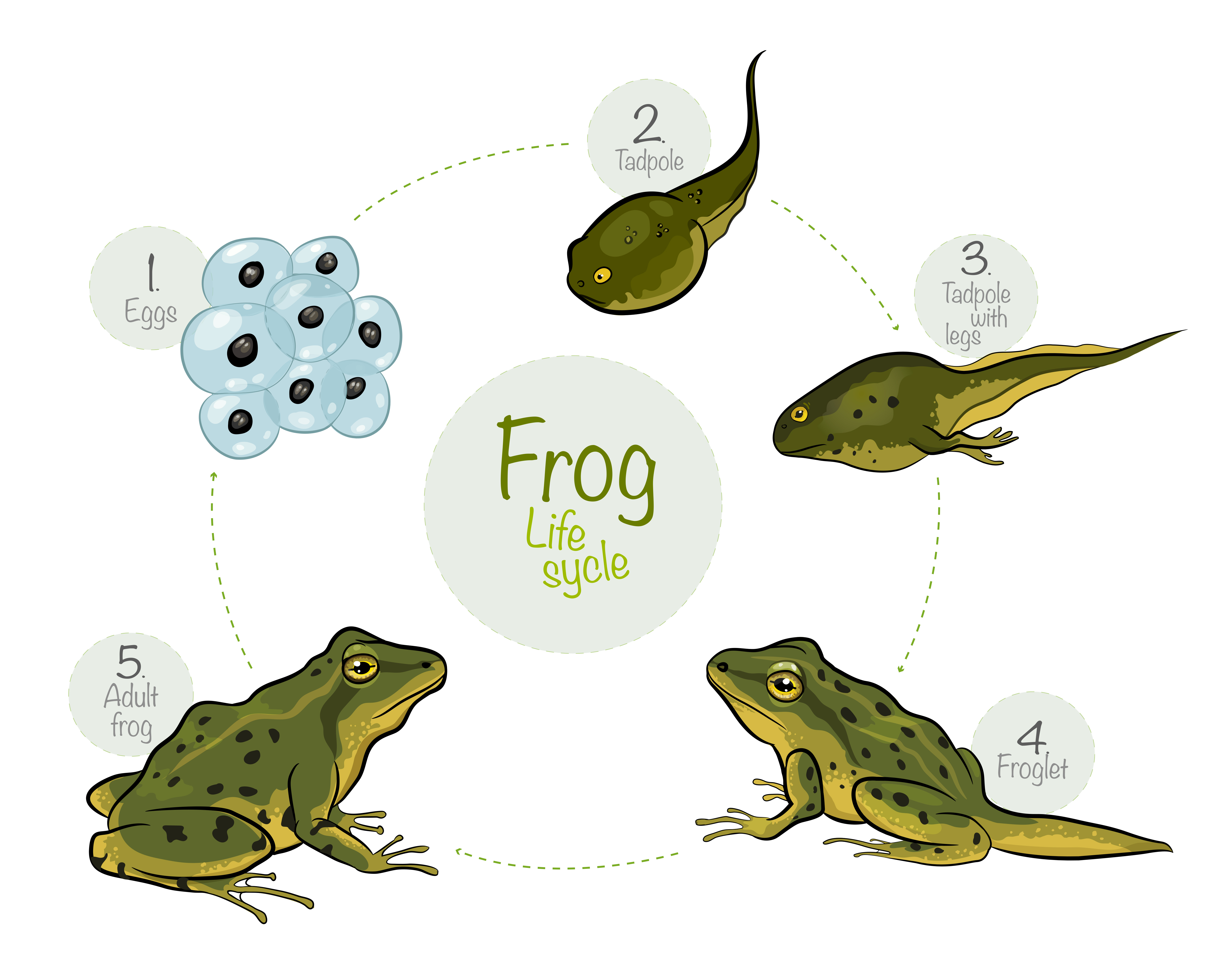



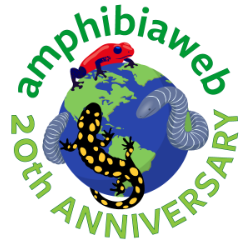


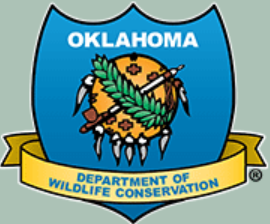
 Wildlife Tag
Wildlife Tag
